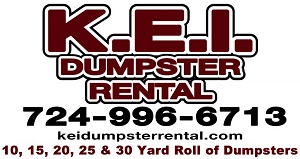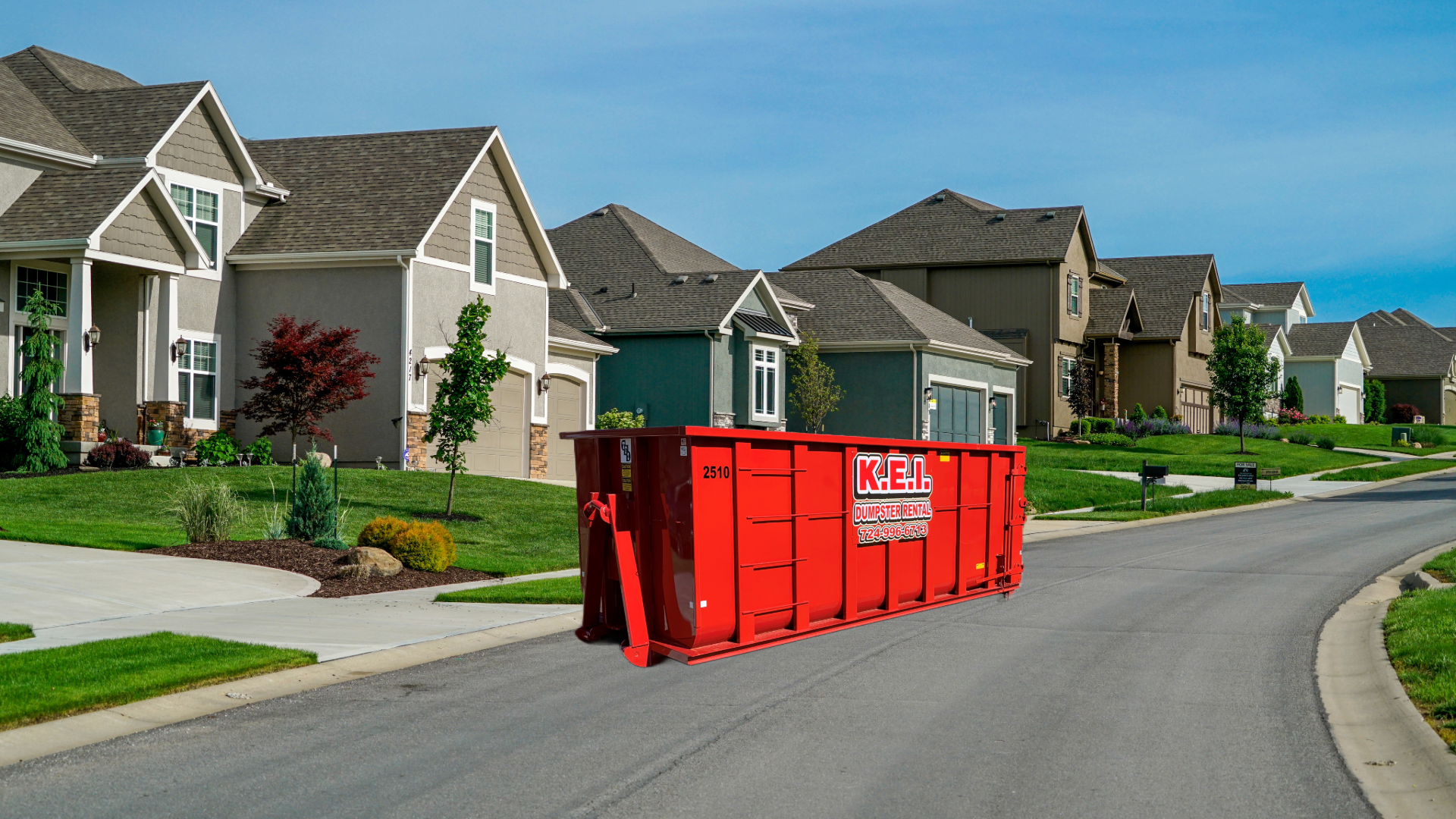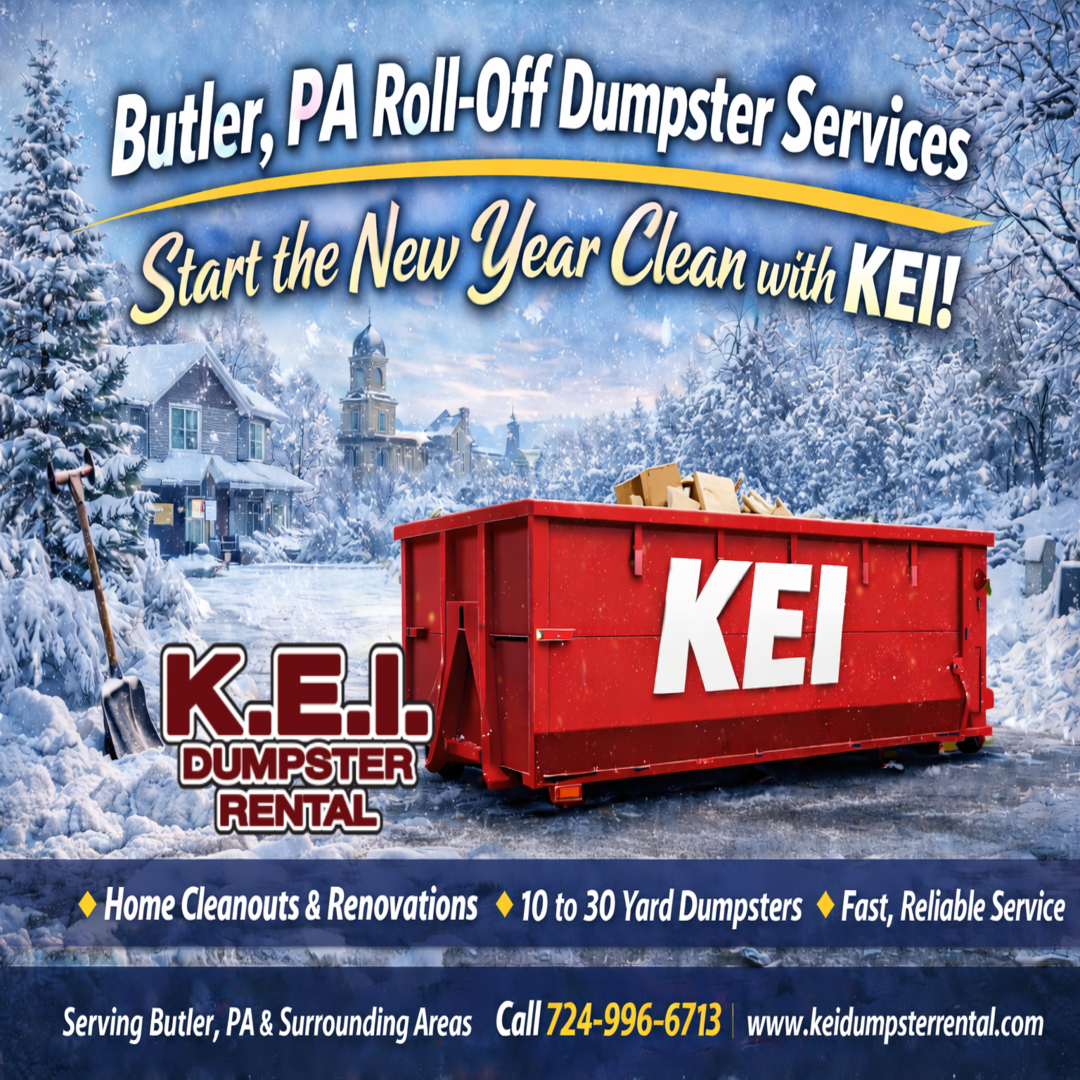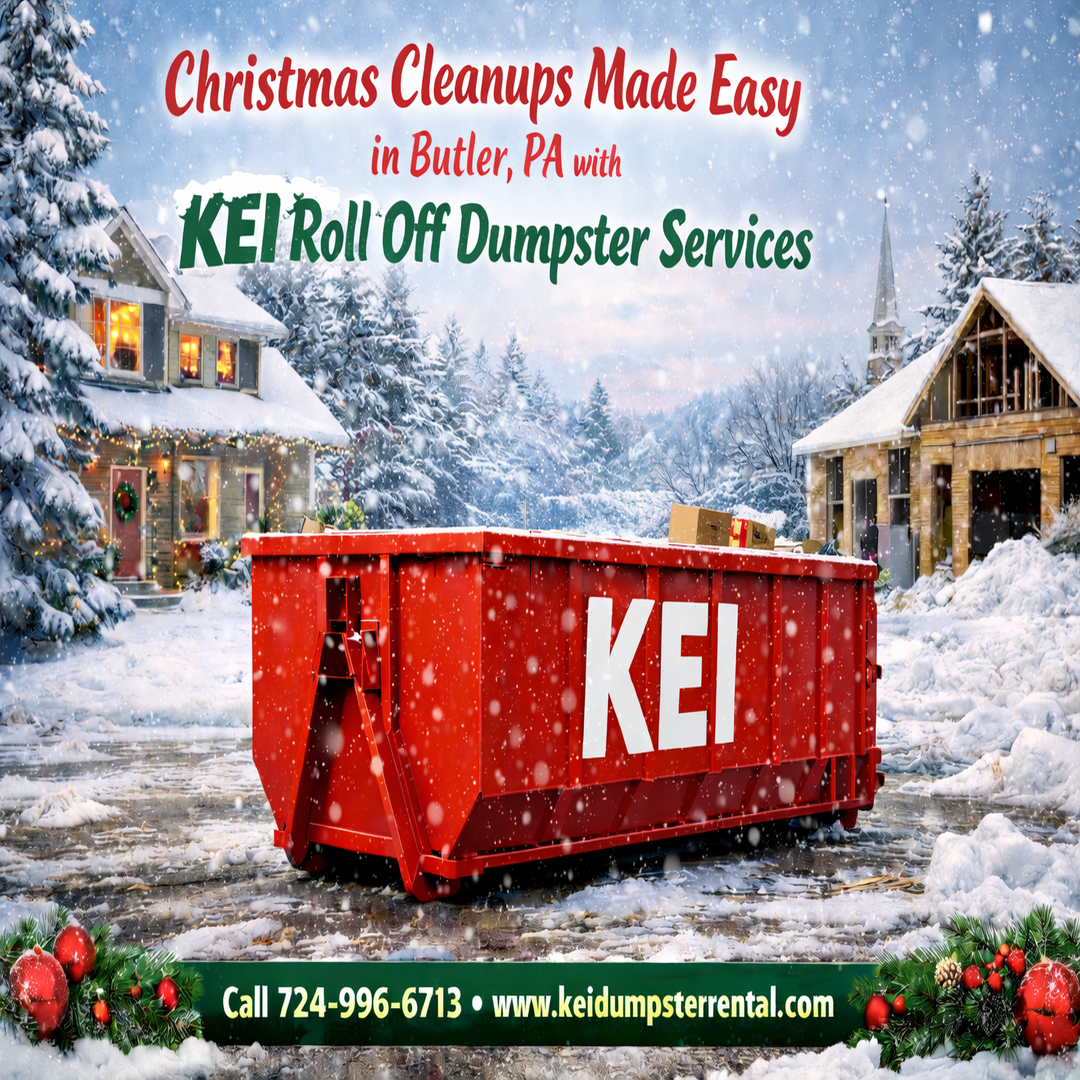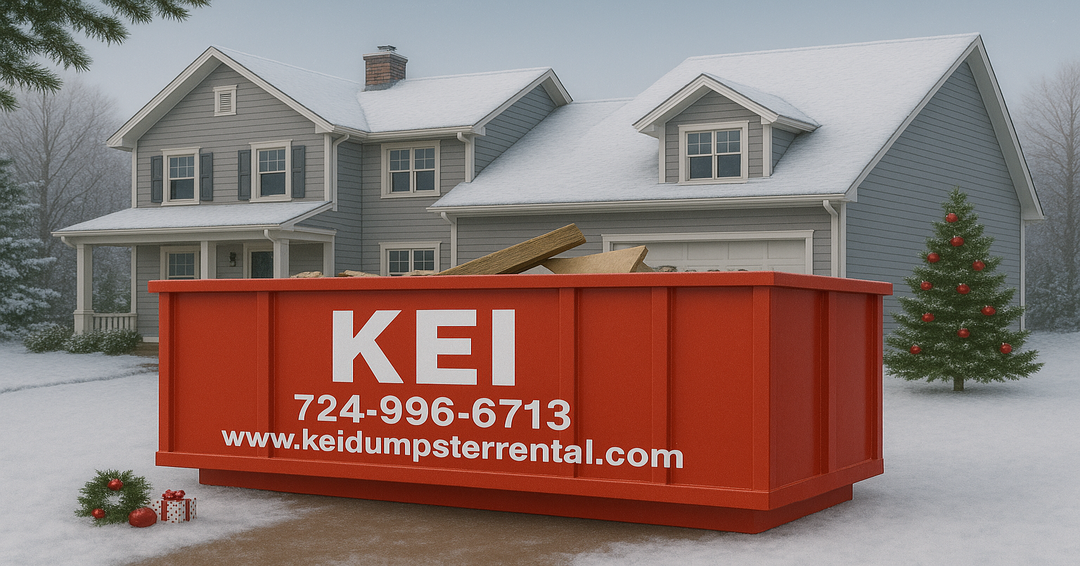Homeowners can find all sorts of reasons to need a dumpster rental. Spring cleanouts, landscaping overhauls, and major renovation projects require a convenient and safe way to dispose of large volumes of debris and other waste.
Considerations must be made when planning your project and requesting a roll-off dumpster from a local dumpster rental company. Among them is taking precautions to prevent disrupting your community.
Dumpster rental etiquette calls for simple precautions such as carefully placing your dumpster so it’s not blocking access, maintaining a tidy worksite, and scheduling drop-offs and pick-ups at times that don’t disturb the peace.
Follow these etiquette tips to prevent conflicts and maintain positive community relationships.
1 – Get dumpster rental approval first
Some communities require property owners to secure a permit before getting a dumpster rental delivery. Check with your local municipality or Homeowner Association (HOA) to ensure you follow all ordinances and rules before you call a dumpster rental company.
HOAs can be particularly problematic because most have stringent policies. Some common limitations can include:
- Location restrictions. Many HOAs dictate where you can place a dumpster rental on your property. Some may even prohibit dumpsters from front driveways, on streets, or anywhere that blocks access or visibility.
- Time limits. HOAs frequently enforce time limits on how many consecutive days a dumpster rental can remain on your property. Exceeding the rental period may require paying additional HOA fees or obtaining extension approval.
- Size constraints. Some HOAs restrict the maximum dumpster size that homeowners can rent based on the dimensions of the nearby properties and any potential obstruction issues.
- Aesthetic requirements. To maintain a uniform look, HOAs may mandate dumpster rentals be a certain color to blend in. Most dumpster rental companies have bins in their brand colors, which might make finding a local company with the right color of dumpster challenging.
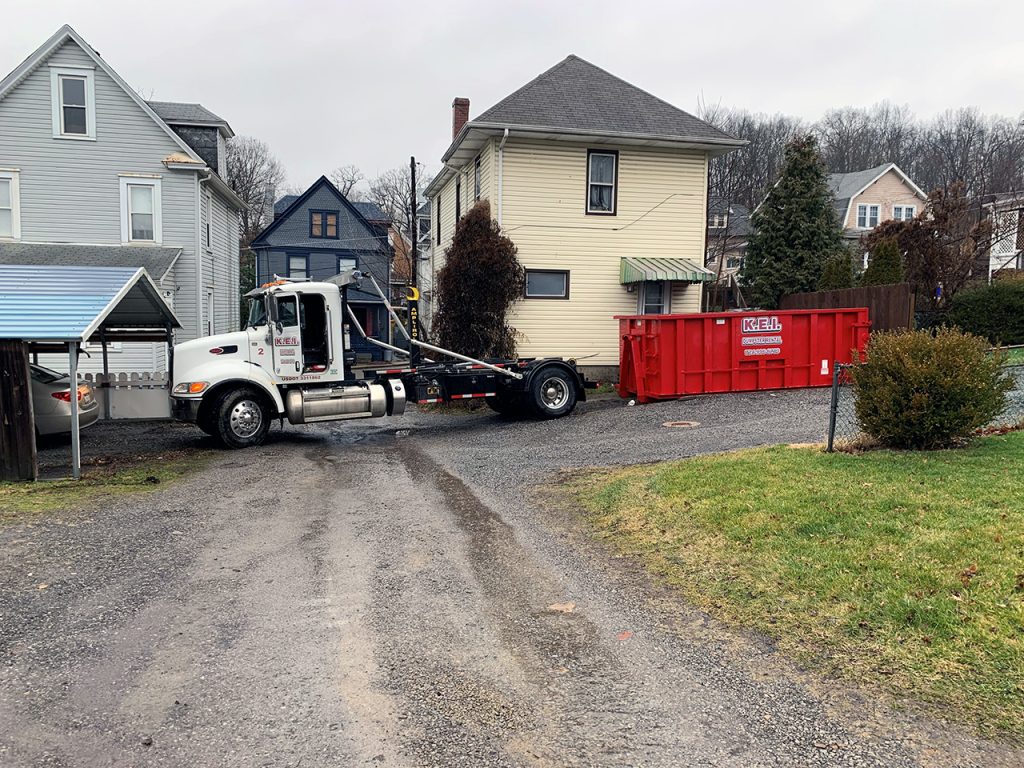
2 – Choose the right location
Where you place your dumpster can mean the difference between angry neighbors and ones who tolerate the inconvenience.
Dumpster rental companies prefer a flat, solid surface on the renter’s property away from obstacles that can make delivery and pickup difficult. Driveways often fit the bill. However, not all property owners have driveways. In that situation, street placement may be necessary (and may require a permit).
Other tips for placement include:
- Avoid obstructing your neighbors’ view from windows or doorways or placement that can obstruct the path of vehicles entering and exiting driveways.
- Steer clear of utility lines including overhead wires, underground pipes, and cables to prevent damage from the dumpster.
- Keep away from high foot traffic areas to avoid inconveniencing passersby and reduce the possibility of injury from debris.
You may have to get creative with a neighbor if you truly have no spots on your property that work for a dumpster rental. The key is to ask for cooperation and to be as considerate as possible if they agree to place a dumpster on their property for your convenience.
Once you pick the ideal spot, determine whether the dumpster delivery truck has ample room to maneuver during drop-off and pickup.
3 – Be mindful of choosing a dumpster rental schedule
Depending on the dumpster rental size, the delivery truck may block access to public streets and other amenities during drop-off and pickup times.
To be considerate of your neighbors, stay away from times when traffic is the heaviest in your neighborhood. Morning and evening rush hour for commuters and peak school bus transportation times should be avoided.
Some communities have noise ordinances, so it’s also recommended to check with your local municipality to prevent disturbing your neighbor’s peace and reduce the likelihood of getting fined for a violation.

4 – Keep debris and waste contained
Overfilling your dumpster increases the risk of debris and other waste spilling into the street – or worse yet – onto your neighbor’s property.
Not only are scattered items unsightly, but they also pose a liability issue because they risk injuring others. Loose construction materials such as nails, broken glass, and other items create serious safety hazards for neighbors, especially children.
Loose debris can lead to code violations with your local municipality or HOA. Depending on the rules and regulations, you might get a hefty fine for failing to contain your waste.
5 – Notify your neighbors
As a courtesy, consider notifying your closest neighbors about your dumpster rental delivery date, including how long you plan to have one on-site. For placement in shared areas like streets, issuing a warning gives your neighbors a chance to voice any concerns.
If you live in a neighborhood with an HOA, giving your neighbors advance notice may be required in your HOA covenant.
Even if not technically required, giving your neighbors a heads-up builds goodwill and prevents misunderstandings. A little proactive communication can go a long way toward a smoother, conflict-free experience.
Reduce tensions over dumpster rentals
Following dumpster rental etiquette is about more than being a good neighbor. Following best practices prevents unnecessary headaches and conflicts that could derail the progress of your project.
Mindfulness about noise levels, safety, and maintaining accessibility allows you to complete the task at hand while keeping your neighbors happy.
